
Knowing how to transfer money to a Bitcoin wallet is a crucial skill for managing digital assets in the modern world. A Bitcoin wallet serves as a secure space for storing funds and conducting transactions, making the process of transferring money a fundamental part of using decentralized finance. Whether you are purchasing digital currency, paying for goods or services, or sending funds to a friend, knowing all the necessary steps ensures efficiency, accuracy, and security.
Why Transfers Matter
Transferring money to a digital wallet is not just a technical task; it plays a vital role in the broader ecosystem of digital payments. Efficient fund transfers ensure that you can respond quickly to opportunities, meet payment deadlines, or safely keep your holdings. This process is essential whether you are a casual user buying small amounts of digital currency or an advanced trader moving large sums across platforms.
Comprehending the nuances of these transfers also helps users avoid mistakes. Sending funds to an incorrect address can result in irretrievable losses, making it important to master this process. Furthermore, familiarity with transferring funds lets you navigate platforms along with instruments confidently, reducing reliance on third parties as well as enhancing control over your financial activities.
Simplifying the Process
At its core, transferring funds to a wallet involves a straightforward set of actions. By breaking down this process into simple steps, even those new to digital transactions can execute transfers seamlessly. First, you need a recipient address — this is a unique identifier for the destination wallet. Second, ensure that the sending platform supports the same currency as well as transaction network as the recipient address. Finally, confirm the transfer amount, approve the transaction.
What may appear daunting at first becomes second nature once you know the basic workflow. Most modern platforms as well as applications provide user-friendly interfaces to guide you through the process. From scanning QR codes to copying and pasting wallet addresses, instruments are designed to simplify experience as well as minimize errors.
Common Scenarios for Fund Transfers
- Purchasing digital currency:
Acquiring digital assets often involves transferring money from a bank account or card to a secure storage space. This ensures that your holdings are protected, accessible for future transactions.
- Paying for services or goods:
As more businesses accept digital payments, knowing the process of sending funds directly to a merchant’s wallet has become increasingly relevant. This is especially important to make fast, borderless transactions.
- Sending money to friends or family:
Peer-to-peer transfers are a common use case, whether for splitting bills, repaying debts, or gifting funds. Direct transfers avoid fees, delays that are often associated with traditional banking systems.
- Exchanging between platforms:
Traders frequently move funds between exchanges or storage solutions to take advantage of market conditions. Knowing this exact process helps avoid unnecessary fees along with delays.
Tools and Platforms
Executing a transfer involves instruments such as exchange platforms, mobile apps, or specialized hardware devices. These tools act as bridges, ensuring smooth movement of funds. Platforms often include built-in safeguards like address validation, transaction previews to prevent errors. Additionally, transaction networks play a vital role, with options like Lightning Network offering faster, cost-effective transfers for smaller amounts.
By knowing how to transfer money to a bitcoin wallet, you gain confidence in managing digital transactions. With each successful transfer, you build skills that are necessary for operating efficiently within the digital economy. This knowledge not only reduces risks of mistakes but also opens the door to greater financial independence. Mastering this process lets you make the most of your digital assets, whether for personal use, investment, or global transactions.
Preparing for the Transfer
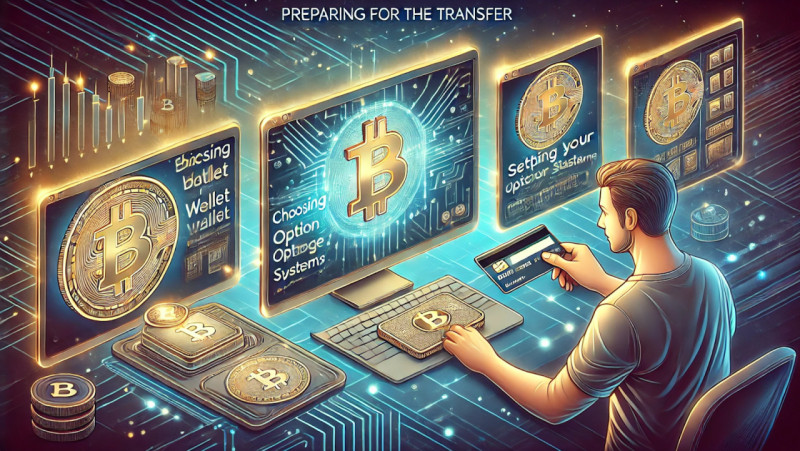
Choosing the Right Option for Storage
Ahead of sending funds, selecting a reliable storage method is crucial. There are various types of options available for holding digital assets:
| Hardware storage | physical devices, often resembling USB drives, suitable for keeping funds offline; these are among the most secure methods but may require a higher initial investment |
| Mobile options | apps designed for smartphones; they suit everyday use, but rely on device's security |
| Desktop software | programs installed on computers; these provide a balance between accessibility and control but can be vulnerable to malware |
| Web-based services | online platforms accessible via browsers; these are easy to use but depend heavily on the provider's security measures |
When choosing the right solution, consider security, accessibility, and intended purpose. In particular, long-term holders may prioritize security as well as choose hardware devices, while active users might prefer mobile apps for quick access. Always ensure that your provider is reputable, has a proven track record of protecting users' assets.
Setting Up Your Storage System
Once you’ve chosen the appropriate method, the next step is setting it up. Here’s a streamlined process:
- Download trusted software or acquire a device: if you prefer digital options, always download software directly from an official website for avoiding counterfeit versions. If you prefer physical devices, purchase directly from manufacturers or authorized retailers.
- Secure private keys: private keys grant access to your funds. Never share them, avoid keeping them in digital formats that can be hacked. Write them down on paper or use a secure, encrypted backup.
- Generate a receiving address: each storage solution provides a unique identifier for receiving funds. This is often a long alphanumeric code or a scannable QR code.
- Backup recovery phrases: many systems provide a recovery phrase during setup. This is essential to regain access if you lose your device or forget your credentials. Keep it in a safe, physical location.
A well-set-up system minimizes the risk of losing access to funds, ensures smoother transactions.
Acquiring Digital Funds
To begin transferring money, you first should acquire some. Here are common methods:
- Purchasing through exchanges: online platforms like Coinbase, Binance, or Kraken let users buy digital assets using traditional currencies. Set up an account, link a payment method such as a bank account or credit card, complete the purchase.
- Peer-to-peer platforms: these services connect buyers with sellers directly. They suit users who value privacy or wish to avoid exchange fees.
- Receiving from others: if someone already owns funds, they can send them directly to your address. This is often the simplest option for beginners.
- Mining or earning: advanced users can mine or earn digital assets by participating in blockchain networks or accepting payments for goods as well as services.
Each method has unique advantages, but regardless of chosen approach, ensure compliance with local regulations, verify credibility of platforms or individuals you interact with.
This preparation process ensures a secure as well as efficient experience when learning how to transfer money to a bitcoin wallet. Properly setting up your system, acquiring funds lays the foundation to make seamless transactions along with peace of mind.
Steps for Making a Transfer
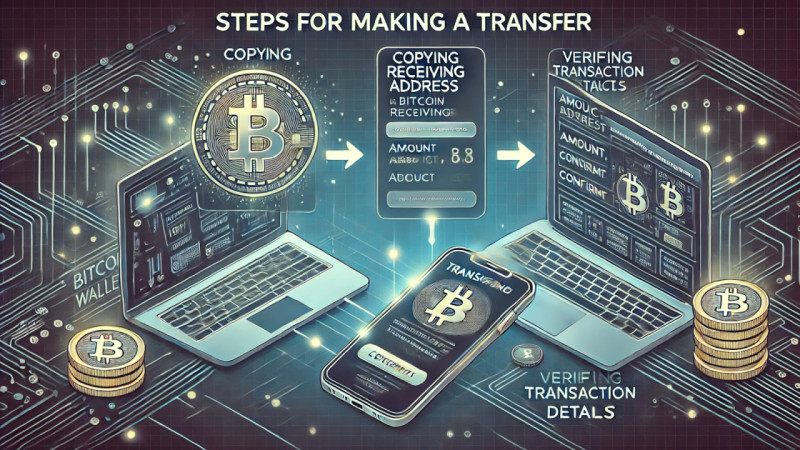
Copying the Receiving Address
The first step in transferring funds is obtaining the recipient’s unique identifier. This address is unique for their digital storage solution, acts as the destination for funds. To locate an address:
- Open the recipient’s storage platform or application.
- Find the section labeled “Receive” or “Deposit.”
- Copy the provided alphanumeric code or, if available, scan QR code for automatic input.
Accuracy is paramount. Even a single incorrect character can result in a failed or misdirected transaction, which is often irreversible. Double-check address against the original source ahead of proceeding. If using a QR code, ensure your scanner captures code correctly without truncation or distortion. Avoid manual entry whenever possible, as it introduces unnecessary risk for errors.
Initiating the Transfer
With the recipient’s address ready, you can proceed to initiate transfer from your storage solution, exchange, or financial service platform. Here’s how to do it:
- Log in securely: access your platform or account, ensuring all security measures are in place. Enable two-factor authentication, check that you are on an official platform website or app for avoiding phishing attempts.
- Locate withdrawal section: select menu options like “Send,” “Withdraw,” or “Transfer.” These sections let you move funds out of your account.
- Enter destination address: paste the recipient’s identifier into an appropriate field. Take care to verify the pasted information, ensuring it matches the original address exactly.
- Specify amount: decide how much to send, enter the amount in a designated field. Some platforms let you toggle between units of digital currency and traditional fiat currency for clarity.
If the platform includes an optional note or reference field, use it for communicating additional information to the recipient, such as identifying a specific invoice or order number to make business-related transfers.
Verifying Transaction Details
Ahead of finalizing the transaction, thoroughly review all details to avoid costly mistakes:
- Check recipient address: even a minor mistake, such as an extra space or missing character, can result in an invalid or misdirected transaction. Paste an address into a notepad or text editor to confirm its accuracy.
- Review amount: ensure the value you’ve entered is correct, especially if converting from another currency. Double-check that the receiving party expects the amount you’re sending.
- Account for transaction fees: platforms often charge fees for processing transfers. These fees can vary depending on network activity. Confirm the total transaction cost, including fees, to avoid surprises.
Common mistakes include copying an incomplete address from text, using an outdated identifier, or misunderstanding amount because of currency conversions. A few moments of careful review can save you from unnecessary stress or loss.
Confirming, Sending the Transfer
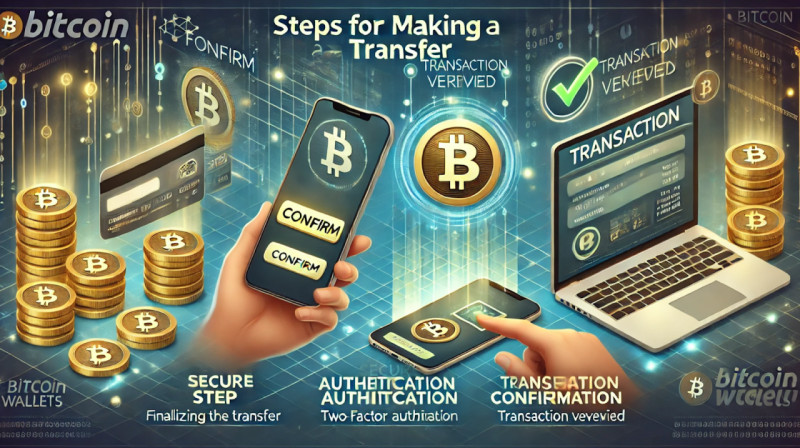
When you’re confident that you know how to transfer money to a bitcoin wallet and details are correct, proceed to sending funds:
- Finalize transfer: click confirmation button to proceed. Many platforms will display a summary screen for a final review ahead of authorizing transfer.
- Authenticate process: depending on a platform, you may be prompted to input a password, PIN, or authentication code. This additional step protects against unauthorized transactions.
- Transaction verification: once submitted, a transaction is processed through the network for verification. This step ensures that a transaction is valid and prevents fraud.
To track the progress of your transfer, use a blockchain explorer. This instrument lets you track status by entering a transaction ID which is provided by your platform. Confirmation times vary based on network activity, they can range from a few minutes to over an hour during peak times.
Practical Tips for Smooth Transfers
- Use small test transactions when transferring a significant amount of money for the first time. This reduces risk of major loss if an error occurs.
- Save frequently used recipient addresses in your platform’s address book to get easy access as well as reduced risk of mistakes.
- Track your transaction history to confirm successful transfers and spot any unusual activity.
Mastering these steps ensures confidence when learning the process of sending digital assets to a crypto wallet. By following this guide, you can manage digital transactions with accuracy and peace of mind, avoiding common pitfalls while maximizing efficiency.
Tips for Successful Transfers
Ensuring a smooth, secure transaction requires attention to detail along with smart planning. Avoiding common pitfalls, following best practices can save time, money, stress. These actionable tips help make this process more efficient as well as error-free while reducing risks.
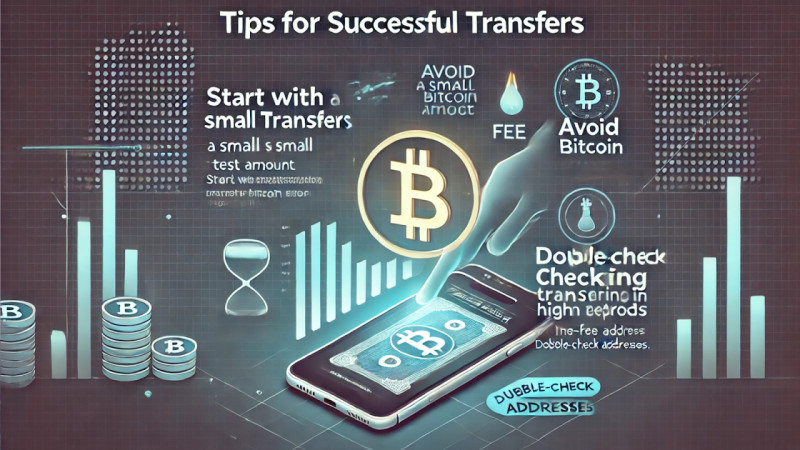
Start with a Small Test Amount
Ahead of sending a significant amount of money, initiate the process with a small test transaction. This approach minimizes risk, lets you verify several critical factors:
- Accuracy of recipient address: test transaction confirms that a destination address is correct, properly set up for receiving funds.
- Functionality of sending platform: sending a small amount ensures your platform is configured correctly, all processes, including security measures, are working as expected.
- Network confirmation speed: by observing how quickly the initial amount is processed, you can gauge the current state of the network, anticipate the time required for larger amounts.
While this step might seem like an extra effort, it can prevent significant loss because of errors or unforeseen issues. After the test amount is confirmed, proceed with the larger transaction confidently.
Avoid Transferring in High-Fee Periods
The cost of moving funds can fluctuate significantly depending on network congestion. When demand for transactions is high, fees increase, processing times can slow down. For cost minimization as well as ensuring faster confirmation:
- Track network traffic: use fee estimation instruments or blockchain explorers to assess current activity levels. These instruments provide real-time insights into typical fees, transaction wait times.
- Choose off-peak times: network activity is often lower during weekends or late-night hours in major regions. Sending funds during these periods can reduce costs.
- Adjust transaction priority: some platforms let you select different fee levels based on how quickly you want the transaction processed. Choose standard or low-priority fees if time isn’t a critical factor.
Knowing how to transfer money to a bitcoin wallet along with careful planning along with timing can save money, reduce delays, making the process smoother as well as more efficient.
Double-Check Addresses
The most common mistake in sending digital funds is entering an incorrect destination address. This error can result in permanent loss of funds. To prevent such issues:
- Verify each character: even though addresses are lengthy, complex, taking a moment to check full string ensures no errors occurred during copying or pasting.
- Use QR codes: many platforms as well as applications provide QR codes for address input. Scanning these eliminates the risk of manual entry mistakes, speeds up the whole process.
- Avoid reused or expired addresses: some systems generate unique identifiers for each transaction. Using an old or expired address can result in failed or misdirected transactions.
If you’re unsure about an address, confirm it with the recipient ahead of proceeding. Double-checking ensures peace of mind, avoids costly errors.
Additional Best Practices
- Enable security features: platforms often offer options like two-factor authentication, transaction PINs, address whitelists. Use these features to protect your funds.
- Keep records: save transaction IDs, receipts for future reference. These details are essential for tracking or resolving any issues.
- Be patient: while most transactions are processed within minutes, network delays can occasionally occur. If your transfer isn’t confirmed immediately, use a blockchain explorer to track progress.
Knowing these strategies enhances your ability to manage digital transfers effectively. When following these tips, mastering the procedure of transferring funds becomes a streamlined, safe, reliable process.
Ensuring Security During Transfers
Safeguarding your funds during a transaction is essential to protect against unauthorized access, fraud, loss. Following these security measures ensures peace of mind, shields your assets from potential threats.
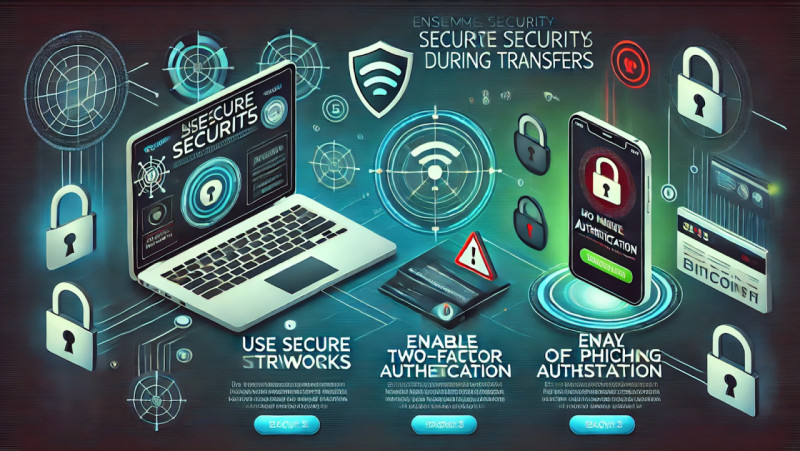
Use Secure Networks
Public internet connections, such as those found in coffee shops, airports, or other shared spaces, are not safe for financial transactions. These networks are often unencrypted, making them easy targets for hackers looking to intercept sensitive data.
- Avoid public Wi-Fi: always conduct transactions on a trusted private network. If you must use a public connection, refrain from logging into accounts or sending funds.
- Use a VPN: virtual private networks encrypt your internet connection, masking your IP address along with data from potential attackers. Invest in a reputable VPN service to add an extra layer of security when accessing financial platforms.
Secure connections protect not only the funds being sent but also your personal, account details from being exposed to malicious actors.
Enable Two-Factor Authentication
Two-factor authentication (2FA) is one of the most effective instruments to secure accounts. It requires a second layer of verification beyond just a password, making it significantly harder for unauthorized users to gain access.
- Set up 2FA on all accounts: most platforms offer 2FA options, such as SMS codes, authentication apps like Google Authenticator, or hardware keys. Enable this feature on your storage platform, sending service, any linked accounts.
- Choose authentication apps: while SMS-based 2FA is common, it is vulnerable to SIM-swapping attacks. Apps like Authy or hardware devices such as YubiKey provide more robust security for those who know how to transfer money to a bitcoin wallet safely.
- Regularly update credentials: change passwords frequently, avoid reusing them across multiple platforms. A strong password combined with 2FA provides comprehensive account protection.
Two-factor authentication not only deters potential attackers but also notifies you about any unauthorized login attempts, enabling you to take immediate action.
Be Wary of Phishing Attempts
Phishing scams are a common tactic used to steal account credentials or funds by tricking users into interacting with fake websites or emails. Recognizing and avoiding these scams is crucial.
- Verify URLs, links: always double-check a website address ahead of entering sensitive data. Fraudulent sites often mimic legitimate ones but have small variations in spelling or domain extensions (e.g., ".com" vs. ".net").
- Avoid clicking unverified links: never click on links in unsolicited emails or messages claiming to be from financial platforms. Instead, manually type the website’s address into your browser or use bookmarked links.
- Use official platforms, apps: only download apps or access platforms through official channels, such as verified websites or app stores. Be cautious of third-party sources that may host counterfeit software.
- Look for security indicators: ensure that site uses HTTPS encryption, indicated by a padlock icon in a browser’s address bar. This signals a secure connection.
Remaining vigilant against phishing attempts protects you from falling victim to scams, ensures integrity of your accounts along with transactions.
Final Thoughts on Security
Ensuring safe transactions requires attention to every detail. By using secure networks, enabling robust account protection measures like 2FA, staying aware of potential scams, you create a secure environment for sending funds. These proactive steps minimize risks as well as provide confidence in the process, making tasks like learning the process of transferring digital assets efficiently, stress-free.
Common Issues, How to Solve Them
Even with meticulous preparation, problems can arise during digital fund transfers. Comprehending common challenges along with how to address them ensures a smoother experience, minimizes risk of permanent loss.
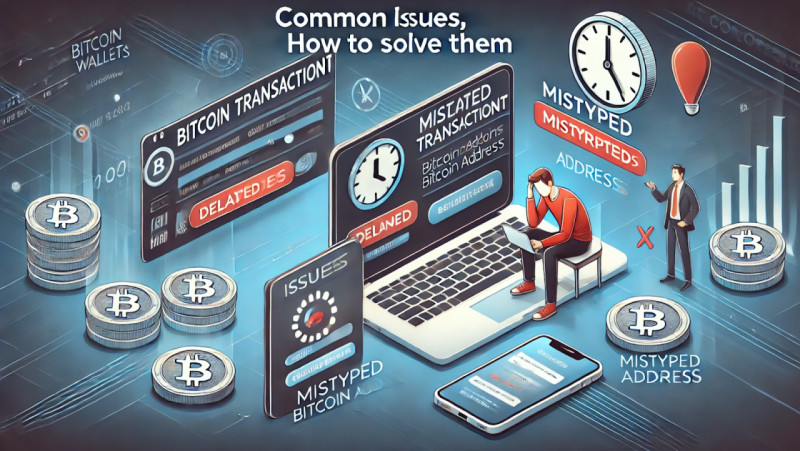
Delayed Transactions
Network congestion as well as insufficient fees are the most frequent reasons for delayed transactions. The system processes transfers in order of priority, determined by the fees attached. If your transaction fee is too low during peak activity periods, the confirmation process can stall indefinitely.
- Identify cause: check your transaction status using a blockchain explorer. If it shows as “unconfirmed” for an extended period, low fees or high network activity are likely to blame.
- Use replace-by-fee (RBF): if the original transaction supports RBF, resend it with a higher fee. This process overrides the earlier request, pushing it to the front of the processing queue.
- Child-pays-for-parent (CPFP): in cases where RBF isn’t available, initiate a new transaction involving unconfirmed funds with a higher fee. Miners prioritize this new transaction, thereby confirming both.
- Wait if necessary: if you’re unwilling or unable to use RBF or CPFP, patience is your next best option. Eventually, network activity will decrease, letting a transaction go through.
Using instruments for estimating fees ahead of initiating a transfer can help you know how to transfer money to a bitcoin wallet and avoid this issue entirely by ensuring an appropriate fee for the current network conditions.
Mistyped Addresses
Entering an incorrect address is one of the most critical errors that can occur during a transfer. These identifiers are unique, sending funds to the wrong destination is typically irreversible.
- Identify mistakes immediately: double-check address ahead of initiating a transfer. If you catch an error after clicking send, there is no way to stop or reverse the process once the network confirms it.
- Reach out to a recipient: if you know the owner of an incorrect address, contact them and request they return the funds.
- Consult platform or service provider: in rare cases, if the error involves an intermediary like an exchange, they may assist in recovering the funds. However, this is only possible if the funds are sent to an address controlled by the service.
- Prevention is key: avoid manual entry by copying and pasting addresses or using QR codes whenever possible. Verify address multiple times ahead of proceeding.
Mistyped addresses underline the importance of caution along with verification in every transaction.
Transaction Rejections
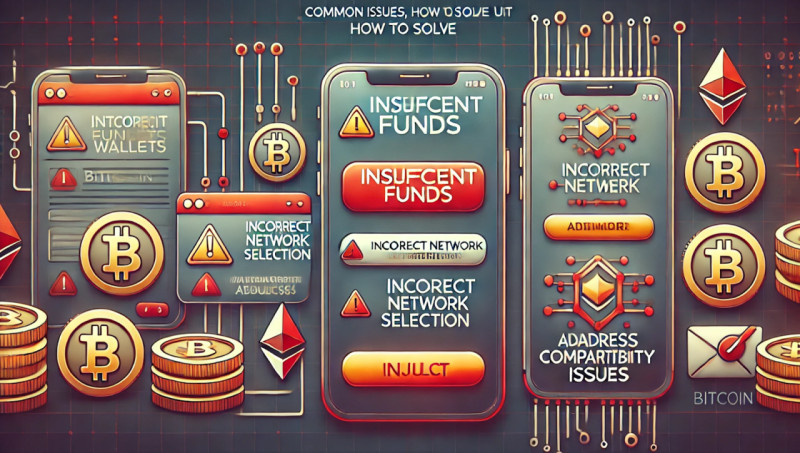
Rejections typically occur when the sender fails to meet certain requirements, such as insufficient balance, incorrect network settings, or incompatible addresses.
- Insufficient funds: ensure your account balance covers both transfer amount and associated fees. Many platforms display total cost, making it easier to calculate the necessary amount.
- Incorrect network selection: using the wrong network can result in failed or misplaced transactions. In particular, sending BTC on a chain designed for another digital asset will cause the transaction to fail or become irretrievable. Always confirm that both the sender’s and recipient’s platforms are configured for the same network.
- Address compatibility issues: some platforms or services may not accept certain address formats. Verify that address matches required specifications ahead of sending funds.
If your transaction is rejected, most platforms provide an error message explaining the reason. Use this data to troubleshoot, resolve the issue.
Proactive Measures to Avoid Common Issues
- Double-check every detail: verify the recipient address, amount, network, fees ahead of initiating a transfer.
- Stay updated on network conditions: use fee calculators, blockchain explorers to assess current activity as well as adjust fees accordingly.
- Familiarize yourself with your platform’s features: learn how to use instruments like RBF or CPFP to manage issues when they arise.
By addressing these potential challenges with caution, preparation, you’ll navigate the process of transferring funds more confidently as well as efficiently.
Advanced Options for Transfers
For those seeking to optimize transactions, reduce costs, or enhance security, several advanced techniques, tools are available. These options are particularly useful for frequent users, businesses, or individuals managing substantial amounts of digital assets.

Batch Transactions
Batching involves combining multiple outgoing transfers into a single transaction, significantly reducing overall fees. This method suits businesses or anyone frequently sending funds to multiple recipients.
- Fee reduction: in traditional transactions, fees are calculated based on the size of data included in the transaction. Knowing how to transfer money to a bitcoin wallet lets you use batching to consolidate multiple outputs into one, reducing the amount of data processed by the network, thereby lowering fees.
- Efficiency: single transaction simplifies tracking as well as accounting, making it easier to manage multiple payouts.
- Implementation: most advanced platforms along with payment processors support batching. If you’re managing multiple transfers manually, look for a platform that offers this feature or consult your provider’s documentation for instructions.
Batching is a cost-effective strategy that also helps reduce network congestion, benefiting all users.
Lightning Network Transfers
Lightning Network is a second-layer solution designed for fast, low-cost transactions. It operates by creating off-chain payment channels that settle on the main network only when necessary, making it perfect for frequent, small-value transactions.
- Speed and cost: Lightning transactions are processed almost instantly, at a fraction of cost of traditional network transactions, regardless of network congestion
- How It works: payment channels are established between two parties, letting them send and receive multiple transactions without interacting with the main network until the channel is closed.
- Setup: to use Lightning Network, select a platform or application that supports it. Look for services like Phoenix, Breez, or Zap that provide user-friendly interfaces for managing channels, conducting transactions.
- Use cases: Lightning Network is ideal for micropayments, recurring transactions, or any scenario where speed, cost-efficiency are priorities.
Adopting Lightning Network can significantly enhance user’s experience, particularly if users prefer conducting frequent or time-sensitive transactions.
Multi-Signature Wallets
For high-value or team-managed accounts, multi-signature (multi-sig) setups provide an additional layer of security by requiring multiple approvals for a transaction to proceed.
- Enhanced security: multi-sig requires multiple private keys to authorize a transfer. In particular, a 2-of-3 setup means two out of three keys must sign off on the transaction. This prevents any single point of failure.
- Use cases: multi-sig is particularly useful for businesses, organizations, or families managing joint accounts. It adds a safeguard against unauthorized access, ensuring that significant transactions require consensus
- Setup process: platforms like Electrum, Specter, others support multi-sig configurations. During setup, participants generate, share their public keys to create the joint account. Each participant keeps their private key secure.
- Risk mitigation: by distributing private keys among trusted parties, multi-sig reduces risk of theft, fraud, or accidental loss of funds.
Multi-sig solutions are ideal for securing large sums, ensuring transparency, building trust among multiple stakeholders.
Why These Advanced Options Matter
These techniques are not only practical but also let users make smarter financial decisions. Whether through fee optimization with batching, speed along with cost efficiency with Lightning Network, or enhanced security with multi-signature setups, these strategies elevate the process of transferring digital assets to a professional level. By integrating these advanced options, you can tailor experience to your specific needs, ensuring security, efficiency, flexibility.
Frequently Asked Questions About Bitcoin Transfers

How long does a transfer take?
The time required for a transfer depends on several factors, including network congestion, transaction fees, the number of confirmations required by receiving platform or service if you want to learn how to transfer money to a bitcoin wallet effectively.
- Network congestion: during periods of high activity, such as market surges or significant global events, the network experiences delays because of a high volume of transactions. Low-priority transactions may take hours or even longer.
- Transaction fees: fees play a significant role in determining speed of confirmation. Transactions with higher fees are prioritized by miners, often processing within 10-30 minutes. Lower-fee transfers may take significantly longer.
- Confirmation requirements: each receiving service has its own confirmation policies, typically ranging from 1 to 6 confirmations. One confirmation can take approximately 10 minutes, but time scales with the number required.
Tracking your transaction on a blockchain explorer provides real-time updates, letting users gauge when their funds will arrive.
Can you reverse a Bitcoin transfer?
Once a transaction is broadcast to the network, it cannot be canceled or reversed. This immutability ensures security but also places a responsibility on the sender to verify all details ahead of proceeding.
- What to do if you made an error: if funds are sent to a wrong address, recovery is generally not possible unless the address belongs to someone you know. Contact the recipient if feasible and request they return your funds.
- Double-check everything: prevention is key. Always verify recipient address, amount, network settings ahead of sending funds.
- Use test transactions: when dealing with large sums, start with a small test transfer to confirm all details are correct before sending the full amount.
The irreversible nature of transactions highlights the importance of meticulous attention to detail during every step.
What happens if you send funds to the wrong network?
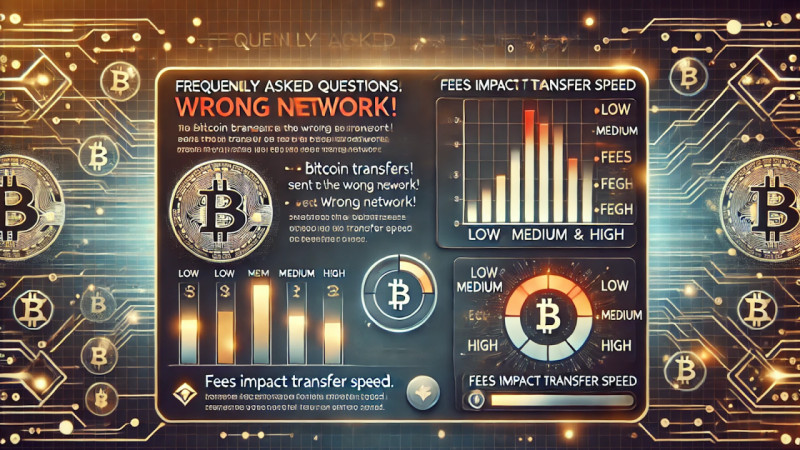
Sending funds to an incompatible network is a common error, especially for users new to digital transactions. In particular, sending BTC to an address on Ethereum network can result in funds being lost or inaccessible.
- Check compatibility before sending: always ensure the receiving platform supports the network as well as asset type you’re using. Some platforms clearly specify compatible networks for each address.
- Recovery options: if you’ve sent funds to the wrong network, recovery may be possible depending on platforms involved. Contact customer support for both the sending and receiving services to explore options. However, success is not guaranteed.
- Prevention tips: familiarize yourself with supported networks of your sending and receiving platforms. Many services now provide warnings if there’s a mismatch in network compatibility.
Knowing the networks in use minimizes risk of this costly mistake.
How do fees impact the speed of a transfer?
Fees directly influence how quickly a transaction is confirmed. The network prioritizes transactions with higher fees, as miners are incentivized to process these first.
Fee estimation tools: use online instruments or integrated fee calculators to determine an appropriate fee for current network conditions. Platforms often display fee options categorized as low, medium, or high priority.
Low fees, delays: transactions with minimal fees may remain unconfirmed for hours or even days during busy periods. This delay can cause inconvenience, especially in time-sensitive situations.
Balancing cost and speed: knowing how to transfer money to a bitcoin wallet lets you choose a fee level that aligns with your urgency. When making routine transfers, a standard or low-priority fee may suffice. In urgent situations, choose a higher fee to ensure rapid confirmation.
Being strategic with fees ensures you achieve desired balance between cost and transaction speed.
Summary
Comprehending these common questions prepares users to manage transfers with confidence as well as competence. Knowing how long a transfer takes, how to address errors, how fees affect processing lets you avoid mistakes, navigate the process of transferring digital funds effectively, securely.
Conclusion: Seamless, Secure Transfers
Mastering steps to send money safely, efficiently in the digital realm is a critical skill for anyone navigating this space. Whether you’re managing a routine transaction or sending a large amount, comprehending the process, addressing potential risks, leveraging the right instruments makes every transaction smooth as well as stress-free.
Recap of the Process
The process of sending funds starts with preparation, continues through to confirmation. Each step has its own importance:
- Choosing a reliable solution: picking the right storage system, whether hardware, mobile, or online, ensures your funds are secure as well as accessible.
- Setting up properly: ensuring the destination address is correct, using backups for recovery guarantees that you can send and receive funds without fear of permanent loss.
- Initiating transactions with care: paying attention to fees, network conditions, recipient details minimizes risks along with delays.
- Managing challenges: knowing how to resolve common issues such as delayed confirmations, mistyped addresses, or rejected transfers lets you act quickly when things go wrong.
Each phase builds on the other, creating a solid workflow that ensures confidence, reliability in every transaction.
Key Tips for Ongoing Success
Security, accuracy, preparation are foundations of successful transfers. Building good habits around these principles will make the process intuitive as well as reduce potential errors.
- Double-check details every time: even experienced users can make simple mistakes like mistyped addresses or selecting the wrong network which can result in permanent loss. Take a moment to verify every piece of information ahead of clicking “Send.”
- Start small when in doubt: when using new platforms, services, or addresses, always begin with a small test transaction. Confirming success of a small transfer builds trust in the process before risking larger amounts.
- Plan around network conditions: use instruments to check current network congestion, adjust fees accordingly. Timing transfers during off-peak periods can save money, speed up confirmation times.
- Keep records: save transaction IDs, confirmations, receipts. These details are essential for tracking transfers, resolving disputes.
Advanced Techniques to Enhance Experience
Taking advantage of more sophisticated options allows for greater flexibility as well as security:
- Batch transactions: if you frequently send funds to multiple recipients, batching consolidates these into one transaction, reducing fees, simplifying management.
- Lightning Network for speed: Lightning Network suits instant, low-cost payments, particularly frequent or small transactions.
- Multi-signature security: when using high-value accounts, requiring multiple approvals to make transactions provides an added layer of protection against unauthorized access.
Incorporating these advanced features into your routine can optimize the process for cost, speed, safety.
Encouragement to Build Confidence
Every successful transaction boosts your knowing of how to transfer money to a bitcoin wallet and trust in the system. Challenges like delayed confirmations or fees may seem daunting at first but are manageable with the right knowledge and instruments. The key is to approach each step with attention to detail, a willingness to learn.
Digital payments represent a shift in how we manage, move money, offering new opportunities for efficiency as well as control. By focusing on accuracy, prioritizing security, staying informed about evolving tools along with technologies, you can make this process a seamless part of your financial routine.
Final Thoughts
Mastering the process of sending digital assets to a crypto wallet is more than just a technical skill; it’s about building confidence along with trust in systems you use. By consistently applying best practices, staying adaptable to new challenges, you’ll not only ensure safety of your funds but also maximize efficiency along with effectiveness of every transaction.
Recommended
“How to create a bitcoin wallet”
“How to top up bitcoin wallet”
















